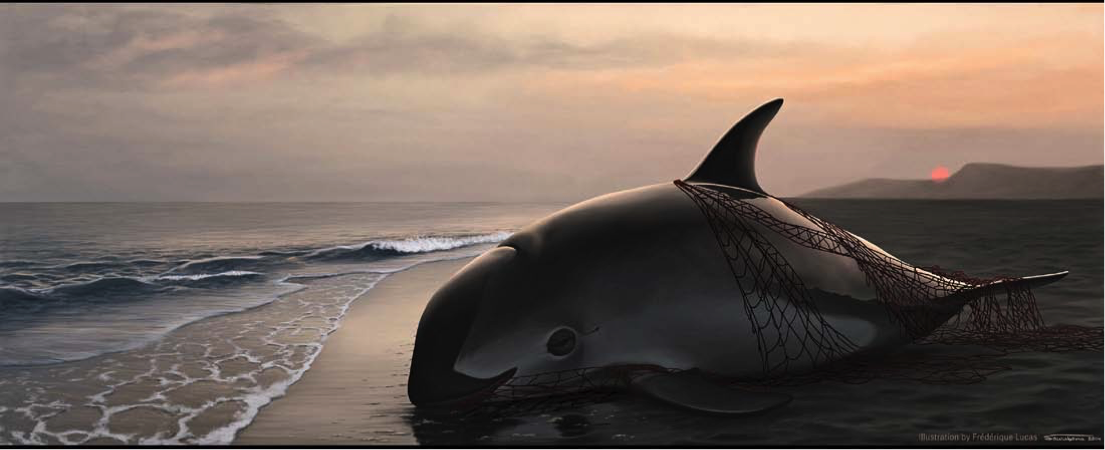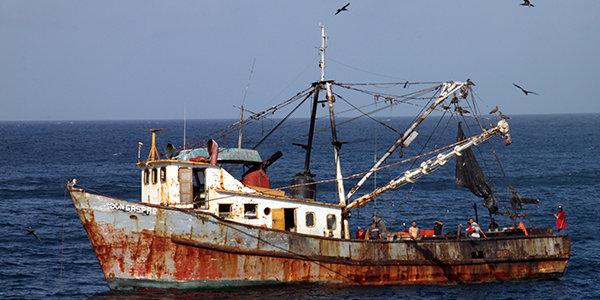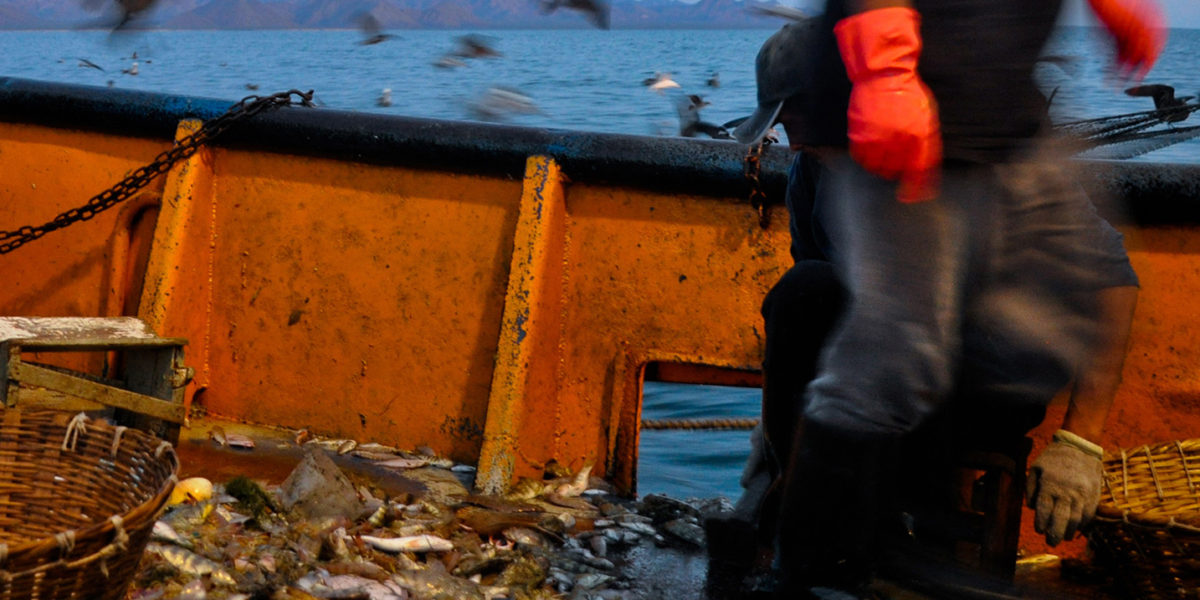The vaquita is nearly extinct.
Scientists estimate that the species now numbers about 60 individuals and is declining rapidly. We do not know the age/sex composition of the remaining individuals and, in particular, we do not know the number of females and their reproductive capacity. If the remaining population includes more males or older females than expected (or hoped), then the species’ status is even worse than the total number indicates.
Ineffective fisheries management and monitoring.
Gillnets, used legally and illegally, have decimated the vaquita population. Blue shrimp (legal) and totoaba (now illegal) fisheries have done the most harm; together, they surely have killed hundreds — and may well have killed thousands — of vaquita since the species was described scientifically in the 1950s.

Some helpful attempts have been made to recover the species, but such measures have consistently failed to provide the full protection needed. About two decades ago Mexico convened an international recovery team for vaquita (CIRVA) and, beginning with its first report, CIRVA has steadfastly recommended that the Mexican government rid the vaquita’s habitat of gillnets. Despite the various efforts made, legal gillnet fishing still occurs for finfish (e.g., curvina), illegal gillnet fishing has rebounded for totoaba, and lost or “ghost” gillnets also may be killing vaquita. The uncertainty about the extent of the harm done by gillnets stems from the fact that the Mexican government has no effective system for monitoring vaquita bycatch in the offending fisheries. Scientists have had to infer the rate of vaquita mortality from a study conducted in the early 1990s and periodic anecdotal information.
Failures/lost opportunities by Mexico, U.S., and China.
The Mexican government and the fishing industry also have failed to implement alternative fishing methods (e.g., small trawls), despite the fact that the need for alternative gear has been apparent for at least two decades and alternatives have been used in other countries. Those efforts have been scuttled by testing in the wrong season, blocked by the dense setting of gill nets in research areas, and generally undermined by the inefficiency of the Ministry of Fisheries, CONAPESCA.
The U.S. government has contributed vital scientific support for assessing the vaquita population and has helped refine small trawl gear for use in the northern Gulf of California. However, the U.S. imports the majority of the blue shrimp caught in the vaquita’s habitat and, has failed to limit the importation of blue shrimp, as required under the Marine Mammal Protection Act. Therefore, the U.S. also is culpable for the vaquita’s declining status.
China, too, is culpable because of its market for totoaba swim bladders. However, vaquita recovery cannot be conditioned on the idea that China will halt that trade. China has long failed to demonstrate that it can control trade in endangered species. Stopping the illegal totoaba trade will require attacking it at its source.
Saving the vaquita.
Various marine mammal species have recovered from similar low numbers and we are capable of reversing the vaquita’s decline. The question before us is “Do we have the values and courage to implement the necessary measures?”
The answer remains unclear.
In April 2015 President Nieto of Mexico implemented a two-year ban on gillnets in the vaquita’s current range, but that ban will expire in April 2017. What will Mexico do then? What will the U.S. do? The main options appear to be (1) implementing and enforcing a complete, permanent ban on all gillnet fishing throughout the vaquita’s range and removing all ghost-fishing nets, and (2) capturing some vaquita to conserve a captive population that can be used for rebuilding the wild population.

In its most recent (7th) report, CIRVA argues that, first and foremost, the species must be saved in the wild. Its rationale is that a wild population is essential to ensure recovery of the species and conservation of its habitat. We are sympathetic to that argument because, in large part, it is intended to compel Mexican decision-makers to take the bold steps that have been debated, but ineffectively pursued, for decades. Decisiveness by Mexican top officials and sustained enforcement by the Mexican Navy, supported by the Sea Shepherd, is key to implementing this option.
However, if the past is the best predictor of the future, then the steady decline of the species indicates that Mexico will not effectively implement and sustain a complete ban in time to save the species. That being the case, the best strategy appears to be to hedge our bets by taking some vaquita into captivity.
Conserving a captive population.
A captive population is better than none. A captive population is a basis for hope, limited as it may be.
Taking vaquita into captivity will be a substantial task requiring that we overcome a considerable number of challenges and needs, including funding; location and capture of at least a small number of these elusive animals; transport to and housing in either a captive facility or a small, protected natural marine environment; engagement of the best available marine mammal veterinary and husbandry staff together with the necessary supplies and equipment; access to diagnostic laboratories; provision of food for the captive individuals; storage facilities with power and freezer capabilities; security for the vaquita and veterinary/husbandry personnel; and support from the local area. This would be a “Hail, Mary” effort — difficult, but not impossible. Still, the question before us has never been whether we can save the vaquita, but whether we will choose to do so.







